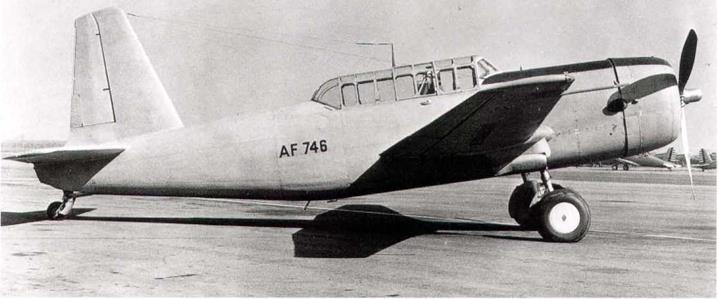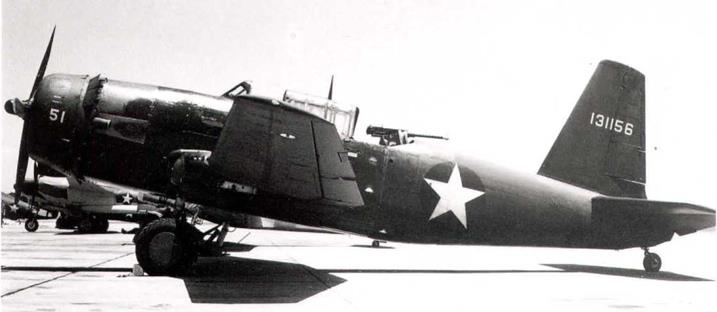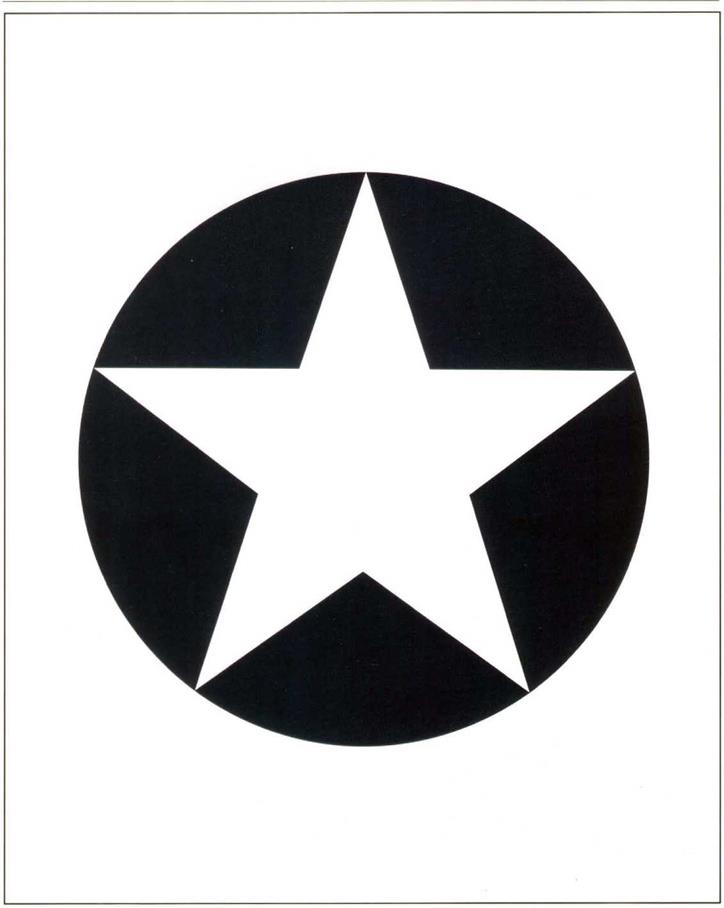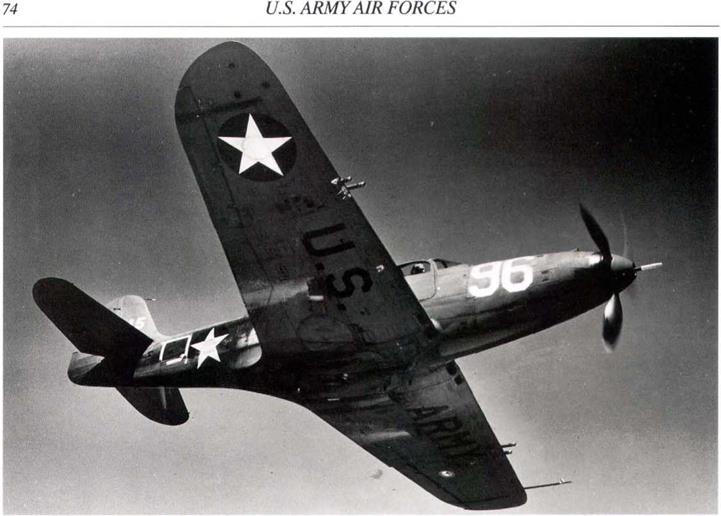Request for Sand, Shade No. 26, to be added to T. O. 07-1-1, May 6,1942
On April 24, 1942, Gen Arnold issued a directive ordering the use of Sand, Shade No.26, on the upper surfaces of aircraft operating on sandy or desert terrain. WF ordered initial shipments of ample quantities of the water paint, brushes, buckets, etc..
Dir. of Mil. Req. (Wash.) does not object to anti-submarine tests of white paint, May 8,1942.
The Dir. of Mil. Req. stated on May 8,1942, in a letter to the CG, Material Command that a series of tests over several years had proved that a neutral gray was the best color for camouflage under ordinary conditions. However, there was no objection to the Coastal Patrol aircraft being furnished with oyster white paint for testing. If this shade proved superior, Specs, and Technical Orders should be so revised. Mat. Com. (Wash.) should forward to 1st Air Force any appropriate paint material found.
|
A training unit Curtiss P-40A. 39-1804, in formation with a natural metal North American AT-6C-NT, 41-32161. The AT-6 has a red stripe on the nose cowl and black number 376 below it on the cowl. Note that the AT-6 has the fuselage insignia star upside down! (Compare it with the P-40 fuselage star.) (USAF) |
|
Lockheed B-34A-LO, RAF Ventura Mk. II, AJ165, was one of a batch of 487 built, of which many were transferred back to the AAF under reverse lease-lend agreements. Seen at Wright Field, it was used by the AAF for over-water patrols, primarily in the Caribbean area. (Harry Gann) |
Gen. Arnold requests changes to application of camouflage, May 8, 1942.
Brig. Gen, Fairchild also wrote another letter to Material Command on May 8,1942, requesting that revisions be made to Spec. 24114 and T.0.07-1-1, covering the application of camouflage to AAF aircraft. These had been requested by Gen. Arnold as a result of watching paint being applied to aircraft at the Douglas Company. The changes requested were:
(1) Spec. 24114 be revised to change the demarcation line between the upper and lower surface camouflage colors as necessary to prevent appearance of a definite, even and continuous boundary line. Masks will not be employed to separate the two shades, The lines of demarcation shall be eliminated as far as possible by blending the colors at the junction lines by overspraying.
(2) Spec. 24114 should also provide for the use of “haze” paint on special photographic aircraft.
(3) Training Aircraft of wood and fabric covered aircraft to be painted with aluminum-pigmented dope.
(4) T. O. 07-1-1 to be revised to include the use of Sand Shade No. 26 for the upper surfaces of aircraft operating over sandy and desert terrain. Also trainers to be painted as in (3) above. Trainers would only be camouflaged as directed by Theatre of Operation Commanders, Training Center Commanders, or Commanders of posts or schools with the necessary authority.
(5) Variations in the basic aircraft camouflage would permit the use of Medium Green Shade no. 42 instead of Dark Olive Drab when the aircraft operate over terrain so predominately green that the darker shade proves to be unsatisfactory. Sand Shade No. 26 could also replace the Dark O. D. over desert type terrain.
(6) Along the leading edges, tips and trailing edges of the wing, vertical and horizontal stabilizers and rudders, splotches or patches of Medium Green No. 42 were to be allowed to break the continuity in appearance of the wing, stabilizers, and rudder outlines. The size of the splotches or stripes were to extend inward from the edges at various distances ranging from zero to 20% of the wing, stabilizer, or rudder chord. If the aircraft was definitely going to a desert or sandy region, the Dark O. D. might be replaced or painted over with Sand Shade No. 26. The above modifications in the basic camouflage scheme were probably going to have to be made at modification centers or at staging points after the aircraft left the production line.
Use of haze paint for special photographic aircraft camouflage was also suggested. Mat. Com. was asked to initiate necessary action for these revisions. Technical Instruction TI-1111, was issued on May 15,1942 to initiate the requested action. All of the above changes were duly added to revised versions of Spec. 24114 and T. O. 07-1-1.
|
The same aircraft, B-34A-LO, AJ165, from a rear view shows its RAF camouflage of dark green and dark earth over sky. Note the shine from the decals used for the insignia; these were commonly used throughout the war. (Harry Gann) |
|
Lockheed Vega B-37-LO, 41-37485, number 16 of a batch of 18 built for the AAF. It was originally intended to build 550 of these as the O-56-LO, but the remainder were canceled. Note that thecocarde only consists of the white star in the fuselage position, without the blue background; this was not to specs., but it is possible that it had not been completed at the time the photo was taken (Harry Gann) |
Change in Serial Numbers and Nomenclature, May 11,1942.
Due to the change in nomenclature of the Air Corps to Air Forces, Material Command directed the following change in identifying USAAF equipment:
a. Lettering on trucks and trailers is to be changed from “U. S. Army Air Corps" to “U. S. Army Air Forces”. Also name plates and records with reference to serial numbers of airplanes and engine, are to be changed from A. C. to A. F.
Responsibility for the development of. and requirements for aircraft camouflage defined in Material Command Office Memorandum No.42-16, May 12, 1942.
(1) The Air Proving Ground Command (Eglin Field), under the Dir. of Mil, Req., was charged with the development of camouflage colors, designs, markings and insignia for the concealment of aircraft on the ground and in the air, for both day and night operation.
(2) The Corps of Engineers was responsible for developing the use of nets, drapes or other coverings for concealing aircraft on the ground.
(3) Thc Material Center (WF) was responsible for preparing specifications for paint materials recommended by the Air Proving Ground, for approving materials and processes used by aircraft manufacturers in camouflaging aircraft, and for investigating new materials and processes as directed by the Dir. of Mil. Req..
(4) The Air Service Command was responsible for the publication of instructions, and the procurement of necessary materials for the maintenance of camouflage on service aircraft.
|
North American BT-I4-NA, 40-1305, basic trainer was a development of the BT-9. It is seen here w ithout the rudder stripes and the red center to the cocardes, but is still in the true blue and orange yellow trainer finish. That color scheme was deleted in September 1942 in favor of an allaluminum finish. (Nick Williams) |
|
Vullee Vengeance Mk. II, AF746, seen unfinished except for the anti-glare panel. This was the second Mk. II built by Northrop out of a batch of 200 aircraft. Most of these were sent to the Burma front as close support aircraft. Note the BT-IJs in the right background. (Convair) |
Red center removed from insignia, rudder stripes deleted on combat aircraft, May 12, 1942.
War Department Circular #141, dated May 12, 1942, stated;
Markings of Military Aircraft. – 1. The red circle in the center of the insignia as used at present will be eliminated. The new insignia will therefore be a five-pointed, white star within a blue circle.
2, The red and white tail marking will be eliminated.
3. These changes will apply to all combat aircraft of the Army and Navy after May 15, 1942.
The circular did not state any reason for this drastic action, but it had arisen as a result of extensive combat action in the Pacific area against the Japanese. The Japanese national insignia was the red hinamoru circle and, in the heat of combat, USAAF and Navy pilots tended to fire at any aircraft with red in its insignia. (Note: red was to return briefly in June-August 1943 to the US National insignia, then it disappeared completely until after the end of the war. It returned as the color of the center stripe of the current US insignia in January 1947).
|
Vultee A-35A-VN, 41-31156 (the eighth A-35A built). This was the AAF equivalent of the RAF Vengeance, and like many of those, these were nearly all converted to target towing aircraft. (USAF) |
|
|

|


Southeast AAF Training Center, Maxwell Field, AL, revises marking and insignia for its trainer aircraft, May 20,1942,
Maj. Gen. Stratemeyer issued General Orders No. 54, revising the marking and insignia requirements for the Training Center’s aircraft to the following:
1. Aircraft in this training center will be marked with identifying numbers as follows:
A. Basic and Advanced – Aircraft belonging to Basic and Advanced Schools will be marked with a code group consisting of an identifying letter or letters for both schools as shown below, plus a digit or digits from 1 to 999, the numbers to be assigned by the station commanders. The letter and number combination will be consecutive with no dash or space between them. The following identifying letters arc assigned:
b.
 |
Primary – Primary aircraft will be identified by a number only. Numbers may run from 1 to 999,
c. Four-Engine Schools – Four-Engine Schools will not use an identifying letter but will use an identifying number of not more than two digits.
2. All identifying letters and numbers will be placed to the rear of the rear cockpit. They will be proportioned and placed in accordance with Para З, T.0.07-1-1, dated April 8, 1941.
3. The radio call letter designator will be placed on the vertical fin of all aircraft in accordance with Para. 8 с. T. O. 071-1 A, dated October 23, 1941. On the primary training aircraft the designator will be placed diagonally on the fin, i. e., from the lower left to the upper right comers on the left side of the fin and from upper left to lower right corners on the right side of the fin. Designators will not be placed on the fuselage of any training aircraft.
4. The distinctive insignia of this Training Center will be centered on the fuselage, just forward of the trailing edge of the lower wing.
5. 
If desired locally, the identifying letters and/or numbers of single-engine aircraft may be placed on the nose cowl for aid in identification. They may also be placed on the nose of twin-engine training aircraft.
|
Bell P-39D being used as a [raining aircraft. It has the red center overpainted on the cocardes, but retains the “U. S.ARMY” markings under the wing, These were ordered removed from all combat aircraft in May, 1942, but not removed from trainer aircraft until October 1942. (USAF) |



















